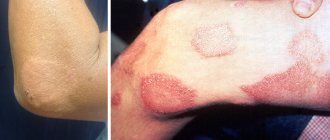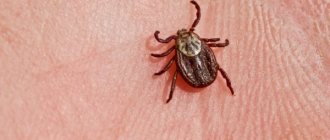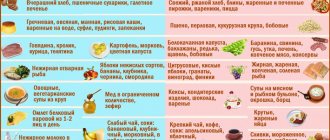Roseola infantum is a viral disease that primarily affects children between six months and three years of age. The disease has its own causes of development, characteristic symptoms and treatment methods. Other names by which the infection is known are three-day fever, pseudorubella, sixth disease, sudden exanthema, exanthema subitum. Despite such different names, the disease is characterized by the same manifestations, course and causes of development.
Girls and boys become infected and suffer from roseola in the same way. After a viral infection, a child develops stable type-specific immunity to the pathogen.
Experts note that children over the age of five are no longer susceptible to infection with this virus. According to them, by the age of five, children develop antibodies to the roseola pathogen. They are formed regardless of the form and severity of the disease.
Is baby roseola contagious or not, how long does the incubation period last?
For quite a long time, doctors could not explain the reasons for the development of childhood roseola. The causative agent of this infectious disease was discovered by specialists relatively recently. It turned out to be herpes virus types six and seven.
Taking into account the results of the research, the main cause of childhood roseola is the penetration of the herpes virus type 6 or 7 into the child’s body. This herpetic virus is widespread, infants are protected from it by their mother's immunity, but by 4 months it begins to decline sharply, as a result of which the baby becomes susceptible to an infectious disease. In adults, the herpes virus type six or seven causes the development of chronic fatigue syndrome, and in children - roseola.
Many parents are interested in the question of whether roseola infantis is contagious if you come into contact with a carrier of this disease. Herpes virus type 6 or 7 is transmitted from a sick child to a healthy one by airborne droplets. The incubation period of roseola infantile lasts from 5 to 15 days, on average it is 7-10 days. Even a child without obvious clinical signs of childhood roseola infection is contagious to others.
Which doctor treats roseola in adults?
Initially, a person needs to contact their local physician. After carefully examining the patient, the doctor will prescribe all the necessary laboratory and, if necessary, instrumental examinations. You may also need consultations with specialized specialists: an allergist, a neurologist. When diagnosing roseola, the main treatment is carried out by an infectious disease specialist.
How do you get infected with baby roseola: how is the infection transmitted?
The disease is seasonal, with the peak of infection occurring in spring and summer. How is roseola infantum transmitted to a healthy child? Experts note that the infection is transmitted by airborne droplets (by sneezing, coughing, talking with a carrier of the virus).
Is roseola infantum contagious or not for adults who come into contact with a sick child?
Adults cannot become infected with this infectious disease because their bodies have long developed a strong immunity. However, children can become infected with roseola from adults who are not sick but are carriers of the virus.
How to make a diagnosis
The symptoms of roseola are similar to those of many other common childhood illnesses, so it may be difficult for your doctor to recognize it right away. The doctor may wait for the rash to appear to confirm the diagnosis, especially if the possibility of illnesses such as a cold, ear infection (otitis) and streptococcal throat infection has already been ruled out. If the fever does not subside and/or your child's condition worsens (for example, the symptoms listed here develop), the doctor may order blood, urine, or other tests to confirm or rule out roseola.
Symptoms of viral roseola infantile: rash and fever
Infantile roseola disease has characteristic symptoms that distinguish it from other viral infections. The very first sign indicating the development of the disease is an increase in body temperature, which reaches 38.5-40 degrees.
A sick child becomes lethargic, soon his appetite decreases or completely disappears, the baby often cries and is capricious. As a rule, childhood roseola disease is accompanied by a slight enlargement of the lymph nodes in the neck. Occasionally, a runny nose may be observed, but it is not accompanied by purulent discharge from the nasopharynx, and swelling goes away within a few days even without the use of vasoconstrictor drugs.
The peculiarity of fever in this disease is that it remains at one level for at least three days, while the body practically does not react to the use of antipyretics. Soon it drops as suddenly as it rose.
After 3-4 days from the moment of infection with viral roseola infantile, the child’s body temperature returns to normal, it drops to 36.6 degrees. However, 10-12 hours after the temperature normalizes, with the development of roseola, a baby rash appears on the body in the form of small pink formations, like rubella. Typically, the rash appears on parts of the child's body such as the stomach, back and neck, while the legs, arms and face are not affected by the rash.
Procedures and operations
In case of high fever, the child must be rubbed down; in other degrees of fever, there is no need for rubdown. Rubbing is carried out if the temperature is above 40, and the use of antipyretic drugs is ineffective.
It should be noted that with this infection this condition is extremely rare, since the temperature can be easily reduced by taking medications. To wipe the child, use water at a temperature of 30-32 (in no case with vinegar or vodka solution). Rubbing is carried out every 20-30 minutes, involving the child’s limbs and torso.
After the procedure, it is either left open or covered with a light sheet. When moisture evaporates, the temperature decreases by 1.5 C. If the child is shaking (freezing), then the water temperature is increased or the child is covered with a blanket.
Childhood roseola virus or sudden exanthema
The childhood roseola virus is accompanied by a symptom in the form of rashes on the body from several hours to three to seven days, but does not cause the child anxiety or discomfort. The rashes look like pale pink spots with a diameter of 3-5 mm. Some spots have a white border.
After about a week, the rash disappears and not a trace of pink dots remains on the body.
Sometimes infantile roseola, or sudden exanthema, may be accompanied by loose stools mixed with mucus and vomiting in the child, completely unrelated to food intake.
List of sources
- Yuldashev M.A., Rikhsiev U.Sh., Moon A.V. Sudden exanthema in children of early childhood // Young scientist. - 2015. - No. 18. — P. 77-80.
- Ovsyannikov D.Yu. Differential diagnosis of infectious diseases in children. Children's infections. 2015; 14(1):49-54.
- Kuskova T.K., Belova E.G. The herpesvirus family at the present stage // Attending Physician. 2004. No. 5. P. 611.
- Nikolsky M.A. Sudden exanthema in children: analysis of clinical cases. Sat. scientific works dedicated to the 170th anniversary of the First Children's Hospital of Russia: Modern technologies for the diagnosis and treatment of children and adolescents. Issue 2. St. Petersburg, 2005: 90–91.
- Pediatric dermatology: Handbook. Under. edited by D.P. Krouchuk, A. J. Mancini. lane from English Ed. N.G. Short. M.: Practical Medicine, 2010: 608.
Is baby roseola dangerous and the consequences of the disease?
Is roseola infantile dangerous? Another common question among parents whose child has contracted this viral infection. Usually, when a child is infected with this viral disease, hospitalization is not required, but in some cases complications may occur.
The main consequence of pseudorubella is the effect of the virus on the child’s central nervous system. Most often, parents are faced with such a dangerous consequence of roseola infantile as convulsions. Much less common is bulging of a large fontanelle or meningoencephalitis, but such serious consequences are also possible. In most cases, complications are observed in children who suffered an infection at the age of 12-15 months.
The following symptoms may indicate the imminent occurrence of seizures in a child:
- cold hands and feet with high body temperature in a child;
- paleness of the skin;
- slight, barely noticeable trembling of the chin, arms and legs.
To prevent the attack from recurring, it is necessary to lower the child’s body temperature as quickly as possible.
Sudden exanthema is dangerous for children with weakened immune systems. This category includes:
- HIV-infected;
- children who have undergone chemotherapy or organ transplantation;
- cancer patients.
The danger of roseola for a child lies in the fact that a weakened body cannot fight the virus on its own. This condition increases the risk of developing complications such as pneumonia, encephalitis and meningitis. Such patients require urgent hospitalization and special treatment measures.
Rarely, against the background of decreased immunity as a result of the development of roseola, the following complications may occur in children:
- acute myocarditis;
- reactive hepatitis;
- polyneuritis;
- intussusception;
- post-infectious asthenia;
- adenoiditis.
Roseola infantum is rarely accompanied by complications such as cough, swelling of the eyelids, and otitis media, which require symptomatic treatment.
Prevention of roseola
Classic pediatrician recommendations will help prevent the disease:
- nutritious nutrition, which should contain foods with plenty of minerals and vitamins;
- observed daily routine;
- hardening of the child's body;
- Dress appropriately for the weather to prevent overheating or hypothermia.
If a child is sick, it is important to isolate him and carefully monitor his condition to prevent the baby’s condition from worsening. After experiencing roseola, children develop lifelong immunity to this virus. A vaccine against sudden exanthema has not yet been developed.
Symptoms of baby roseola fever
Infantile roseola fever entails not only external, but also internal changes. Blood tests will help confirm the development of the disease in a child. When donating blood, a lymphocyte increase and a leukocyte decrease will be detected. There is also an increased level of immunoglobulin.
Upon palpation in the neck area, a specialist may detect a slightly enlarged lymph node. This symptom can also be observed even after recovery for some time. In some cases, it is possible that the child’s liver and spleen may become enlarged, which can be seen during ultrasound examination.
A rash on the body is a characteristic symptom of this disease, which often allows specialists to make an accurate diagnosis. However, you should be aware that a similar rash can occur with other infections that children are also susceptible to.
Roseola infantum is very similar in appearance to rubella; these two diseases are characterized not only by a rash on the body, but also by enlarged lymph nodes. With rubella, there is also an increase in the occipital and posterior cervical lymph nodes. But with rubella, unlike roseola infantile, children never develop such a high temperature.
Similar rashes also often occur with allergic reactions in a child’s body. Roseola has the following distinctive symptoms that are not characteristic of other infectious diseases:
- a rash on the body forms three days after the onset of fever, rashes are observed just as the temperature drops;
- the rashes do not cause discomfort, the child is not bothered by itching or peeling of the skin;
- the rash never appears on the face.
Diagnosis of roseola
Additional examinations will help determine the cause of the development of pathological processes and establish an accurate diagnosis. The pediatrician takes into account the patient’s complaints, examines skin rashes (determines the type, shape, number, location of spots, characteristic accompanying manifestations and skin changes).
Laboratory research:
| Name | Description | Price |
| Polymerase chain reaction. | The cerebrospinal fluid is examined for the detection of enteroviral RNA. | from 300 rub. |
| Serological blood tests. | The results will show increased levels of antibodies that the immune system has produced to fight the disease. | from 500 rub. |
| Cerebrospinal fluid examination. | Diagnostics is prescribed when there is a suspicion of damage by pathogenic microorganisms to the spinal cord or brain, or their membranes. Using a puncture, a small amount of material is taken from the patient's spinal canal. | from 250 rub. |
| Reverse transcriptase polymerase chain reaction. | Allows you to identify common genetic regions of numerous viruses. | from 300 rub. |
| General blood analysis. | The results will show the development of leukopenia and relative lymphocytosis (high level of lymphocytes). The erythrocyte sedimentation rate also increases. | from 300 rub. |
| Ultrasound examination (ultrasound) of the abdominal organs. | If there are symptoms indicating an enlarged spleen and liver. | from 650 rub. |
If necessary, to obtain the most useful information, children with roseola are additionally prescribed echocardiography, electroencephalography, chest x-ray and ophthalmological examination.
Symptomatic therapy in the treatment of infantile roseola
Treatment of roseola infantile is carried out by a pediatrician after confirmation of the diagnosis. During treatment, the child is at home; hospitalization is usually not required.
It is mandatory to treat the symptoms of roseola infantile by using antipyretic, anti-inflammatory, immunomodulatory and antiviral drugs. When a child has a high temperature, it becomes necessary to take antipyretic drugs based on paracetamol or ibuprofen. Rubbing with a damp towel can also give a good result; at high temperatures, the child should wear as light clothing as possible. If a child experiences febrile convulsions due to a high temperature, an ambulance must be called.
To alleviate the baby’s condition during the course of the illness, especially with fever, parents should do the following:
- regularly ventilate the room in which the sick child is located;
- carry out wet cleaning of the room once a day;
- provide the child with bed rest;
- Give your baby to drink as much liquid as possible.
There is no specific treatment for roseola; symptomatic therapy is carried out aimed at eliminating the signs of the disease. This treatment boils down to the following actions on the part of the parents:
Provide the patient with plenty of fluids. During the course of the illness, children can be given water, tea, compote and juices to drink. Breastfeeding should be applied to the breast as often as possible.
When treating this infection, experts strongly recommend giving children saline solutions used for vomiting and diarrhea. –
Hydrovit,
Electrolyte, Humana.
Patients with weakened immune systems are advised to use antiviral drugs to prevent the development of viral encephalitis.
These are medications such as
Acyclovir,
Foscarnet, Ganciclovir.
As a rule, antiviral drugs are not prescribed to a child with normal immunity.
According to indications, children are prescribed antihistamines.
Despite the fact that treatment of an infectious disease is carried out at home with strict adherence to all prescriptions and recommendations, in some cases an urgent visit to a specialist is indicated. The reason for calling or returning to the doctor is fever, when parents cannot independently reduce the high temperature with the help of antipyretic drugs.
It is believed that the absence of fever will protect the child from the development of many complications, because, as a rule, they arise against the background of high temperature. Antipyretic drugs to normalize body temperature can be used in the form of suspensions and rectal suppositories under the following names:
Paracetamol for children; Panadol for children;
Calpol; Ibufen;
Cefekon D;
Nurofen for children;
Viburkol (suppositories).
Before using any of these drugs, you should consult a specialist.
In case of severe swelling of the larynx, which occurs as a complication of the disease, the child should be given local anti-inflammatory drugs. It is strictly forbidden to use vasoconstrictor drugs in the treatment of sudden exanthema. You can use folk antipyretics.
Additionally, it is recommended to use antioxidants, the most powerful of which is vitamin C. If problems with the gastrointestinal tract arise, it is necessary to create a special gentle diet for your baby.
It is also necessary to see a doctor again or call an ambulance in the following cases:
- the child’s body temperature has risen above 39.4 degrees and does not respond to taking antipyretics;
- fever persists for more than seven days;
- the amount of rash on the body does not decrease within three days from its appearance.
Medicines
Photo: unsplash.com
The main medications for fever are non-steroidal anti-inflammatory drugs. For very young children under 1 year of age, NSAIDs are used in the form of injections and rectal suppositories. Older children can be given medicine in tablet form. To reduce the temperature, Paracetamol, Ibuprofen, Nimesulide, Ketorolac are used, with the obligatory calculation of the dose according to the age and weight of the child. Under no circumstances should children be given Aspirin, due to the risk of developing Reye's syndrome!
Infusion therapy is necessary in cases where the child cannot independently take the volume of fluid he needs and if it is not possible to reduce the temperature by conventional means. Isotonic solutions of Sodium Chloride, Glucose, and Ringer's solution are used as droppers. The volume of fluid infused is calculated based on the severity of the child’s condition, his age and weight. If necessary, a catheter is placed in a peripheral vein, so there is no need to re-inject before each infusion.
If the temperature is not brought down by non-steroidal drugs and infusion therapy, glucocorticosteroids can be used in a hospital setting: Prednisolone, Methylprednisolone. For children, it is used in the form of intravenous injections; for longer effects, the drug is added to the dropper.
When a convulsive syndrome develops against a background of high temperature, anticonvulsants (Diazepam) are used to prevent spasm of the respiratory muscles.
If catarrhal phenomena occur, symptomatic treatment is used. If a child has a cough, you can use syrup with ivy (Gelisal, Gerbion). For a runny nose, you can use an isotonic solution and medications with sea water to rinse the nasal passages.
To combat diarrhea in young children, adsorbent drugs (Smecta) and antimicrobial agents (Nifuroxazide) are used. It is worth remembering that diarrhea is an additional factor in the loss of fluid and microelements, which complicates the course of the disease.
The rash associated with roseola infantile, as mentioned, does not require special treatment, so no drugs are prescribed to get rid of it.
Is bathing allowed for infantile roseola?
Bathing a child with roseola is not prohibited, but at high temperatures you should avoid water procedures for several days.
When wondering how you can help a child with roseola in order to alleviate his condition and speed up the recovery process, you should also know what absolutely should not be done. Prohibited actions in case of sudden exanthema are listed below:
- using ice, cold water, a fan, or air conditioning to lower body temperature;
- lubricating the rash areas by any means;
- use antibacterial drugs independently without a doctor’s prescription;
- give the child antipyretic drugs, which contain acetylsalicylic acid (Aspirin) and Nimesulide.
Some fragments from the treatment of roseola infantile symptoms in this photo:
Treatment
All treatment for infantile roseola consists only of drinking plenty of fluids and taking antipyretics, since the disease can go away completely on its own within a week from the onset of fever.
You cannot reduce the temperature with aspirin, since there is a high risk of edema of the liver and brain (Reye's syndrome), and with nimesulide due to the risk of drug-induced hepatitis.
Antiviral drugs in case of roseola disease are not needed, just like antibiotics, since they are not effective.
Treatment at home
Roseola can go away on its own. When the fever goes away, the child should feel much better. But at the peak of the temperature increase, the baby may feel very unwell. To relieve the symptoms of the disease, you need:
Allow the child to rest as much as he wants. Let the baby remain in bed until the temperature returns to normal.
Give your child more fluids to drink. Ideally, saline solutions, but if the child refuses them, there is no need to force them - water, tea, broths, non-carbonated and non-alcoholic drinks are also suitable.
Drying the child with cool water. Only without fanaticism - ice, ice bath, cold water and fans are not suitable, this will only intensify the chills. But a wet towel on your head will help relieve the fever.
There are no other measures to speed up the child’s recovery.
Means for reducing fever in infantile roseola
The following proven safe methods and means can be used to reduce temperature:
- Rubbing. Warm water is most suitable for this procedure. For children over 6 months of age, you can add a small amount of vinegar to the water, which is known for its antipyretic properties. To prepare the product, dissolve a tablespoon of vinegar in a liter of warm water. It is strictly forbidden to use alcohol and vodka for these purposes, because they penetrate the blood through the skin and cause alcohol poisoning.
- Camomile tea. For 300 ml of boiling water you need to take 2 tbsp. l. dried chamomile flowers. Leave the infusion for two hours, then give the child 100-150 ml up to six times a day.
- Elderberry decoction. Pour 200 g of berries with a liter of boiling water and leave for five hours. Let your baby drink ½ glass three times a day after meals. To improve the taste in the absence of allergic reactions, you can add honey. The course of treatment should not last more than three days.
How this article was written
The information presented in this article is based on expert advice published by trusted (medical and government) sources such as the American Pediatrics Association and the American College of Obstetricians and Gynecologists. A complete list of links to sources used to write this article can be found at the end of the article. The information on this page is not a substitute for professional medical advice. Always consult your doctor for diagnosis and treatment.
Methods for preventing the development of herpetic infantile roseola
There is no specific prevention of the development of herpetic roseola in childhood. Methods for preventing infection with herpes virus type 6 or 7 and the occurrence of the disease come down to increasing the resistance of the baby’s body:
- It is important to strictly follow the daily routine. With its constant observance, the child develops a strong immunity that protects him from the action of many viral agents.
- It is necessary to frequently ventilate the room and regularly carry out wet cleaning.
- The child should spend as much time as possible in the fresh air.
- Proper healthy nutrition and fortified foods are the key to a strong immune system.
- Breastfeeding is of great importance for infants.
- If possible, it is necessary to harden the body.
- It is important to limit the baby’s close contact with adults; neither relatives nor close people should kiss the baby.
- The child must have his own dishes and towel.
- It is important to provide your baby with adequate nutrition. The diet should especially be enriched with fresh vegetables and fruits, perhaps in the form of juices and purees - for children who are just getting acquainted with new foods.
- The child should eat small portions, but always 5-6 times a day.
What to do if you have febrile seizures
Convulsions, which with roseola can occur against a background of elevated temperature, are often the cause of panic for many parents. Such a reaction is absolutely in vain. The first thing mom or dad needs to do is to calm down themselves and help the baby cope with the cramps.
It is necessary to free the baby’s neck from constricting clothing, and also remove sharp and piercing objects away. Try to instill calm in the baby with all your appearance.
It is recommended to place a fabric cushion under your head. Hold your baby throughout convulsive attacks; make sure it doesn't fall. Then, when the cramps pass, put him to bed after giving him an antipyretic drug. Be sure to call a pediatrician at home.
Is it possible to walk with infantile roseola?
Parents often ask pediatricians whether it is possible to go for a walk with roseola for children during the course of the child’s disease. Going outside with a sick person during a fever is strictly prohibited, as this can worsen the course of the disease, especially in the cold season. With the development of roseola, a child's immunity is significantly weakened, so he is susceptible to infection with other infections.
In addition, knowing how roseola infantum is infected, namely by airborne droplets, it is important to exclude contact of a sick child with healthy children. However, if it is possible to walk with the child separately from other children, once the body temperature normalizes, you can go out into the fresh air.
During pregnancy
Can a pregnant woman get sick with roseola infantum and how dangerous is this disease for her? Pregnant women are not at particular risk of the disease, but there is still a possibility of getting sick provided that the woman does not have antibodies to herpevirus type 6 in her blood. The carriage of antibodies in the pregnant women studied ranges from 20 to 100%, that is, there are women who do not have antibodies.
After contact with the patient for two weeks, the woman does not feel any changes in her health. Then prodromal signs may appear in the form of weakness, fatigue, headache, and then fever manifests itself. The danger of the disease lies in the high temperature, and the difficulty is that not all antipyretic drugs can be taken during pregnancy. Roseola in pregnant women proceeds favorably and does not require termination of pregnancy. The child is born with antibodies to the virus received from the mother.








